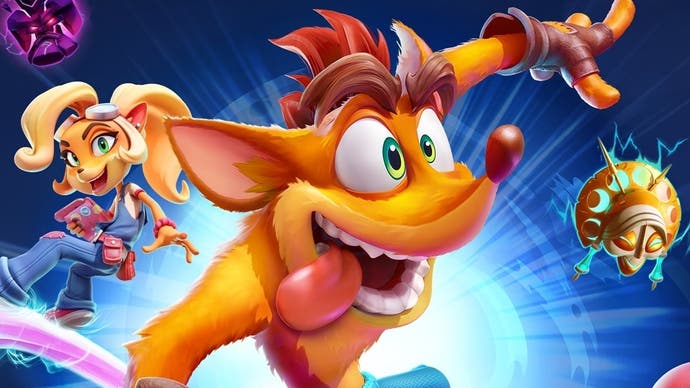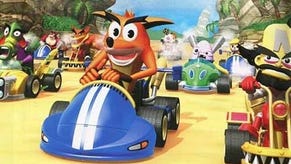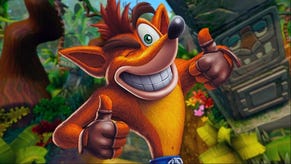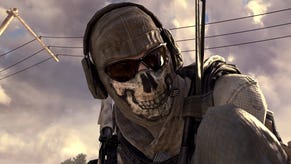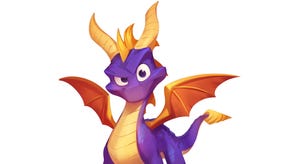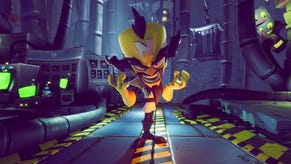Crash Bandicoot 4 revisted: PlayStation 5 vs Nintendo Switch
A true test of Unreal Engine 4 scalability?
Initially released just before the arrival of the new wave of consoles, Crash Bandicoot 4 is set to arrive imminently on PlayStation 5 and Xbox Series machines - but Activision has thrown us a curveball with the simultaneous release of a port for Nintendo Switch. The arrival of this release is a good thing - Crash 4 is a worthy successor to the original trilogy that feels true to its roots, while offering some new ideas along the way. It's far from perfect, but it's a solid platformer that shines on its new host consoles.
You'll note that we're limited to just PlayStation 5 and Nintendo Switch for this piece - Series support is on the table, but it's not easy for publishers to distribute Smart Delivery code to journalists when the title is already available publicly, something we hope to see addressed soon. Still, PS5 and Switch make for an interesting combination in that we're seeing Crash Bandicoot 4 viewed through the lens of systems with a huge variation in horsepower - though both are powered with Unreal Engine 4.
To appreciate the upgrades and changes in this new version of Crash 4, let's quickly recap the Xbox One and PS4 results. Users of the enhanced Pro and One X renditions had the best experience with a frame-rate that mostly hit 60fps, though both were limited to the same 1080p as the vanilla PS4, while Xbox One S delivered the game at 900p. The base version looks fine but runs with an unstable, uncapped frame-rate.
In terms of image quality, the PlayStation 5 version predictably improves this with a jump to 4K rendering, though dynamic resolution scaling can see some slight dips beneath. Switch, however, offers a very different visual experience. In docked mode, the average resolution we found is in the 720 to 792p range while portable is closer to 540p with dips below that in some cases. Most of the dips seem to manifest in the more demanding cutscenes. However, Unreal Engine's temporal upsampling feature brings in accumulated data from prior frames, integrating with the current one to give a much higher level fidelity.
But what else has changed on PS5? Well, the visuals receive an extra touch of polish. Detail is improved slightly and any issues observed in that original version have been eliminated. It looks fantastic, as you'd expect. Loading times are also dramatically faster though perhaps not quite as fast as games built from the ground-up for the system. It also features 3D audio which becomes available when using headphones. But perhaps the more interesting story is how the game was squeezed onto Nintendo Switch.
It's still recognisably the same game, albeit running at half the frame-rate - there's a 30fps cap in place here, which I do prefer over the unlocked alternative on the standard PS4 and Xbox One. While similar, the cuts are many: first and foremost, dynamic lights are aggressively culled on Switch. As a deferred renderer, usually this doesn't buy back a lot of performance but the Switch is extremely bandwidth-limited which makes this more challenging. This applies to everything from additional scenery lights to large scale flashes during stormy effects. Basically, in most cases, lights are drawn in close proximity to the camera but in certain other sequences, they are completely absent - especially during cutscenes.
Secondly, mesh detail is reduced across the board. The changes are smartly made, however, and not something you'd necessarily pickup on outside of direct comparisons. It's a smart optimisation to reduce the geometry throughput. Shadow resolution is also pared back significantly with shadow maps now lacking fine detail. This is another smart choice and is typically one of the first visual features you'd scale back on less powerful hardware. Beyond this, water rendering is reduced in quality with the surface no longer distorting objects beneath. Texture detail is also pared back which, again, is expected bearing in mind the vast system memory differential.

What is unexpected and disappointing, however, is the elimination of post-processing effects such as motion blur and depth of field. I know that motion blur gets a bad rap but it was a perfect fit for this game with its per-object implementation and it's sorely missed at the lower frame-rate. Of course, when you take all of this together, it sure sounds like a lot but I feel that the developer done a great job overall, as the game retains the visual signature you expect. It's obviously a step down from any other version of the game but it's smartly done. Even the loading isn't half bad. It's certainly not as snappy as PS5 but it's comparable to the other versions of the game.
I mentioned this earlier, but the primary difference between docked and portable mode comes down to image quality. The temporal pass present in docked seems to be absent so it looks sharper on the portable screen but with more shimmering. It's an interesting change in that sense but it works well enough in this instance.
Performance is mostly locked at the expected 60 frames per second on PlayStation 5 and any drops to frame-rate are mostly limited to cutscenes - so noticeable but in no way impactful on the way Crash 4 plays. Switch, meanwhile, might be capped at 30fps but the result is very consistent. When performance irregularities emerge, it's typically in the form of a few dropped frames and some 16ms spikes - incorrect frame pacing. Fortunately, this isn't a regular occurrence during normal play. I suspect that this is what we'll see with the conversion of Tony Hawk's Pro Skater 1 and 2 when that arrives on Switch, as that too is a UE4 project. Returning to Crash 4, portable mode runs much like docked - though where the full power experience has performance issues, these are magnified when gaming on the go. Aside from those brief sections, however, it's still 30 frames per second and mostly stable.
Overall, I really enjoyed returning to Crash 4 and the ports to both ends of the hardware spectrum are well handled. On PlayStation 5, the CG cartoon aesthetic is well realised and looks good, while at the nuts and bolts level, it resolves all of the issues I had with the original release while running more consistently and offering a few extra console-specific upgrades. The Switch version is just as good as other comparable conversions: the expected cuts are made but it still looks the part and runs consistently, even if the frame-rate is halved. Crucially, the game is a lot of fun to play and while not quite an iconic return for the franchise, I still feel it's well worth checking out whether you're gaming on the latest and greatest or on Nintendo's unique console hybrid.
